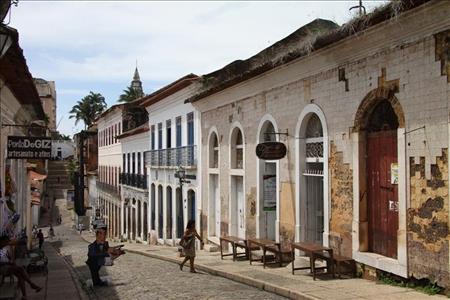Brazil Insider tip: São Luis, Maranhão

São Luis: A colonial city surrounded by impressive nature
São Luis is the only city in Brazil that was founded by the French. It hosts the largest collection of Portuguese tiles in all of Latin America, and its north-eastern flair makes it very popular with visitors... The colonial city of São Luis is a true insider's tip for your trip to Brazil, and you are guaranteed to be delighted by its historic charm.
Cultural diversity creates unique customs and traditions
The city was founded in 1612 by the French in commemoration of King Louis who ruled France about 400 years earlier. Not long after the French named the city of São Luis after their former monarch, the Portuguese also made their way to the small island in the northeast. The region was colonized by the arriving Europeans, and the architecture used by the Portuguese is still a defining trademark of the city of São Luis. The influence of Portuguese architecture is especially prevalent in the historic city center, as the streets are lined with antique mansions and two-story buildings in the architectural style of the colonists. Today, many of the houses serve as museums, stores, or restaurants, allowing visitors a brief trip back in time. Fortunately, the historic buildings are well preserved as large sections of houses have been declared World Heritage Sites by UNESCO.
São Luis is the capital of the state of Maranhão and is well known for its streetscape, which is characterized by a strong European influence. In addition to its rich history, the city is also dedicated to maintaining its culture and traditions. For example, a traditional festival that combines theater, music, and dance is known as Bumba-Meu-Boi. The performances of Bumba-Meu-Boi usually take place in June and July. The tradition originated in Europe and was introduced to Brazil by the colonists. Here, African and indigenous influences led to some changes to the original version, so that in today's performances the presence of the different cultures is quite noticeable. In the northeast of Brazil, the dance performances are very popular and the state of Maranhão is home to more than 100 Bumba-Meu-Boi groups. The performers re-enact the traditional story and surprise their audiences with different characters in the plot. Equipped with elaborate costumes and accompanied by traditional music, the spectacle entertains its audience in the streets or on small stages.
Experience natural paradises in beautiful national parks: Lençois Maranheses and Jericoacoara
When you leave the colonial city and travel a bit further south, you are already on route to a true natural paradise: a never-ending landscape of sand dunes lined with blue freshwater lagoons will soon stretch out before you. You have reached the Lençois Maranheses National Park, which offers you a spectacular panorama and provides impressive views with sand dunes up to 130 feet (40 meters) high.
On the 5-day travel package “Lençois Maranhenses National Park”, you will have the opportunity to discover the colonial city of São Luis in detail and then admire the dune landscapes in Lençois Maranheses National Park. A guide will accompany you on the trip and together you will discover the beauties of the region.
Once you have enjoyed the untouched nature, dune walks, river trips, and sunsets in the desert landscape, you can continue your trip and and travel south down the coast by beach buggy. Here the next paradise will be waiting for you, where beautiful dune landscapes will amaze you once again. On the 7-day travel package “Discover Rota das Emoções”, you will be taken on an exciting journey from São Luis to Jericoacoara, which leads you through unique national parks and takes you to the most beautiful destinations in the northeast of Brazil. Nature lovers and those who are interested in culture will get to know dreamlike places during this trip and create unforgettable memories during their vacation to Brazil.
Source: g1.globo.com/

